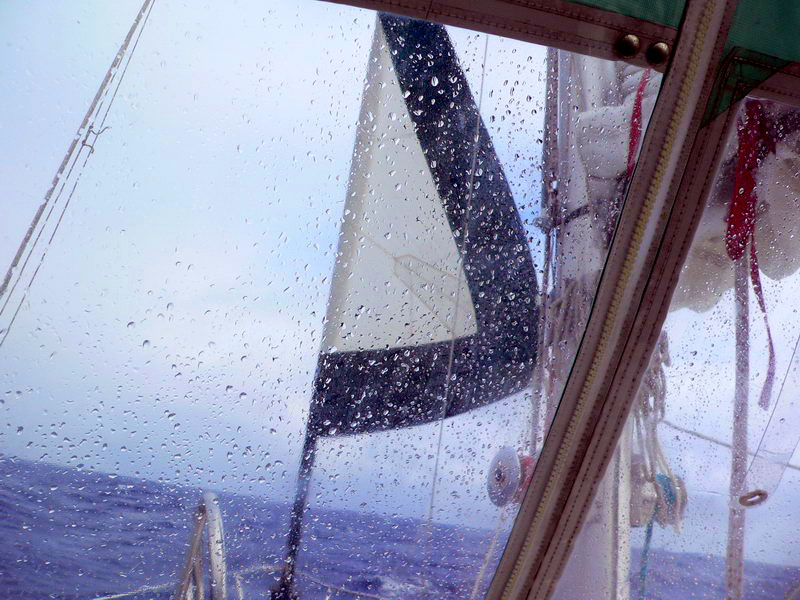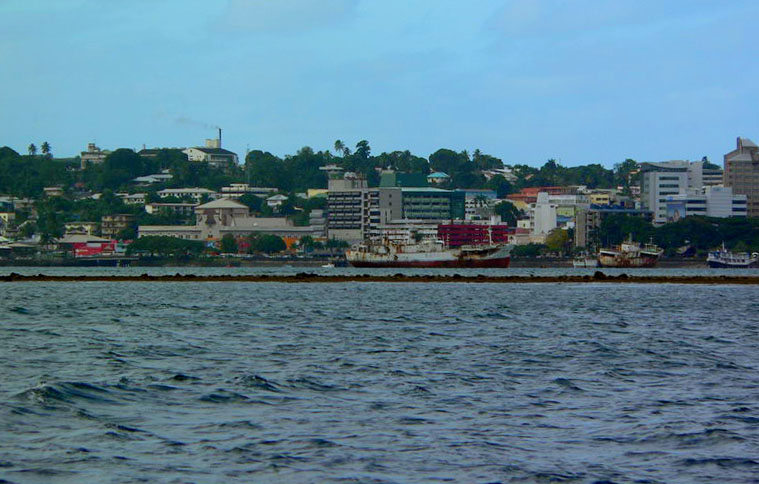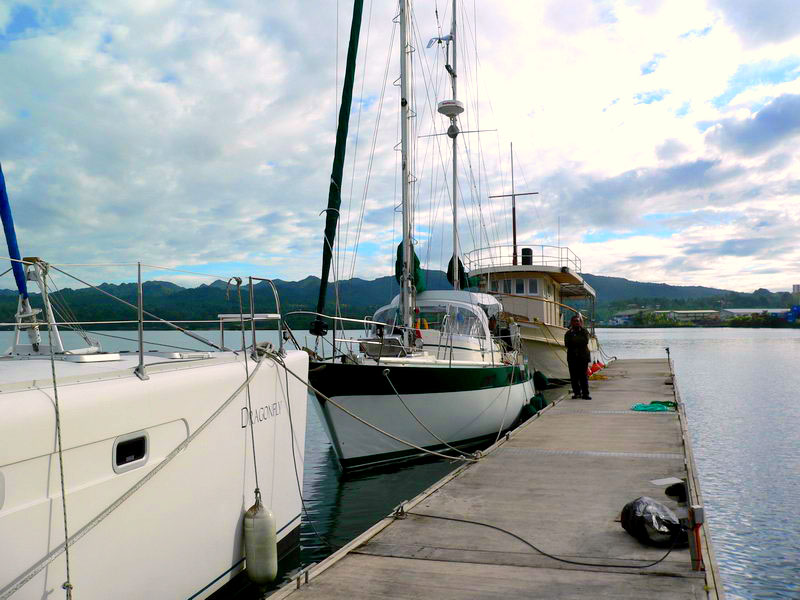Published in the Ocean Watch column, Honolulu Star-Advertiser © Susan Scott
June 30, 2006
One of the hardest parts of sailing across the South Pacific comes as a surprise to me. It’s this: I never want to move on. I got there. I’m settled. I’m staying.
Departing from Tonga’s Vavau Islands last week was no exception. The marine life was excellent, the people friendly and the sailing easy. You’d have to be nuts to leave this place, I thought. Maybe I’ll just leave the boat here.
Of course, I did not. After delaying our departure as long as possible, we headed to the open ocean, where we would get wet, salty and seasick as we rolled, pitched and pounded while I worried about our safety. Ah, the joys of offshore cruising.
Out there, however, we found no wind, no waves and very little swell. Some sailors would consider this unfortunate. Not me. Gleefully I started the engine, and we motored away in glassy calm waters.
For a blissful 20 hours the autopilot drove while we read books, baked bread and listened to music.
Still, I never totally relaxed. Sailing the Pacific is like living in a Stephen King novel. Everything might seem fine, but you know that eventually all hell is going to break loose.
And it did. The light breeze that appeared like a whispering ghost early that morning was by noon a screaming banshee. As the wind strength increased we made the sails smaller. Then smaller. Then smaller still. In a matter of hours, we’d triple-reefed the main sail, and our jib looked like a hanky.

Even with tiny sails, the boat raced along at 6 to 7 mph. But the price of that speed was high. The wind waves grew fiendishly tall and joined forces with a big south swell. Most of the time these white-headed monsters rolled under the boat, but every once in a while, BANG, one would slam onto the side of the boat. It felt, and sounded, like we hit a brick wall.
“I can feel the mast shudder,” Scott said of these crashes. “It’s not a good feeling.”
The waves also rolled us far onto our side, sending loose cabin items flying across the boat. We had to don foul-weather gear to sit in the cockpit. We ate from cans.
I don’t know the wind strength because the boat’s anemometer is broken. This, I decided, was good.
During such conditions, I don’t sleep much. When I’m off watch, I lie in my bunk mulling over boat systems and safety measures. Will the boat hold up? Am I being overly cautious? Not cautious enough? What do other sailboat captains do?
Finally, after riding in a blender for 48 hours, Suva showed up like the Emerald City. We’d made it to Fiji.

After filling out about 20 forms to clear customs, quarantine, health and immigration, we rented a slip at the lovely, peaceful Royal Suva Yacht Club. I had to parallel-park the boat to get into the tight space, but that’s one good thing about offshore passages. After a rough one, anything inside a harbor seems easy.

A pier never looked so good, nor did a city. Suva is wonderful. I got here. I’m settled. I’m staying.